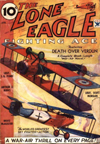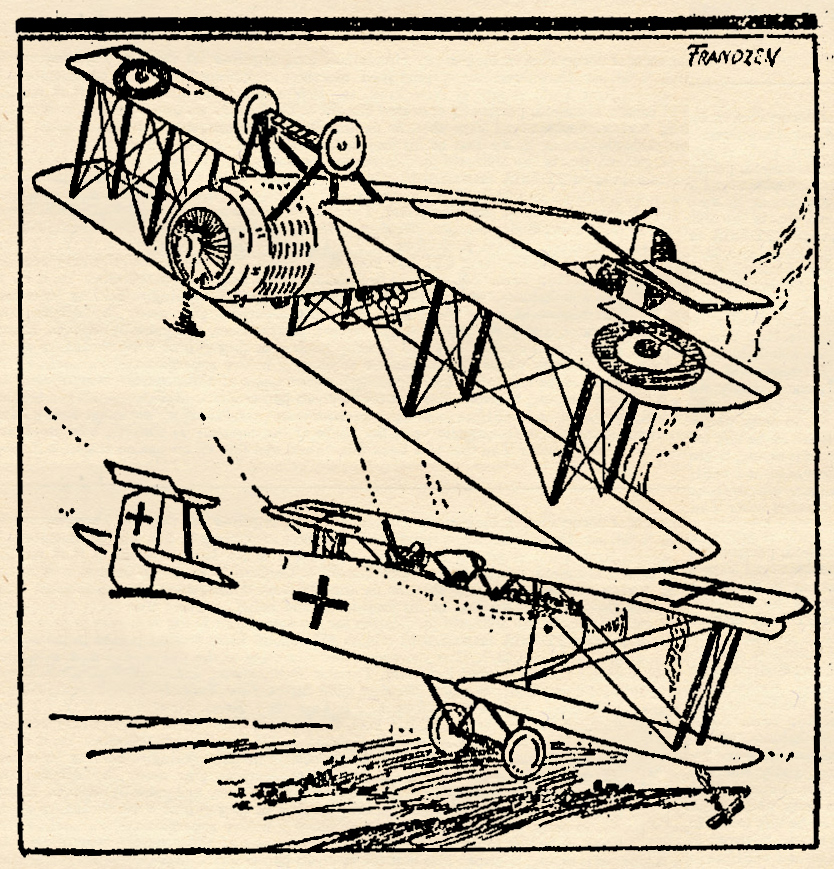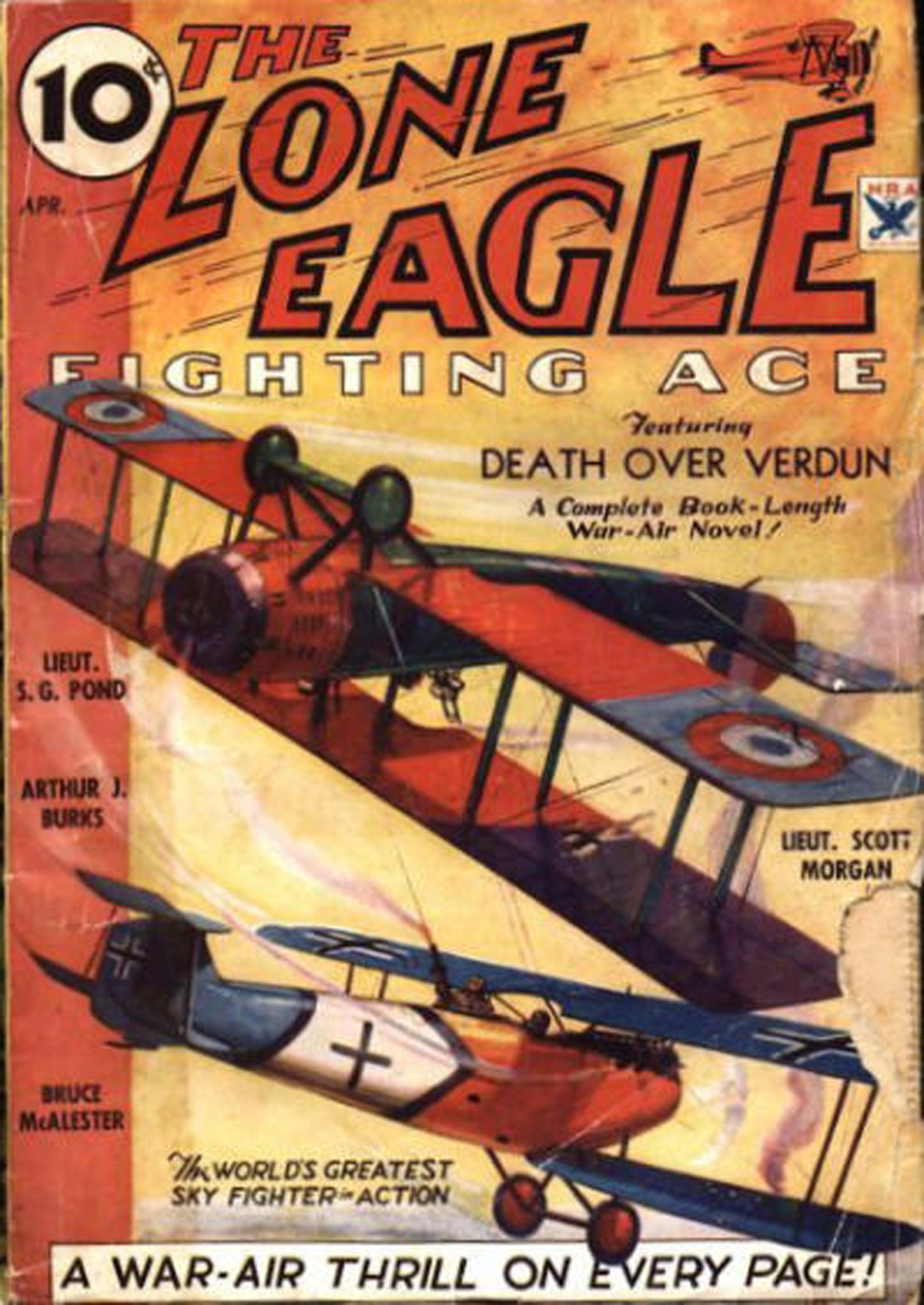“The Lone Eagle, April 1934″ by Eugene M. Frandzen
Eugene M. Frandzen painted the covers of The Lone Eagle from its first issue in September 1933 until the June 1937 issue when Rudolph Belarski took over with the August issue of that year. At the start of the run, Frandzen painted covers of general air action much like his Sky Fighters covers. Here, for the April 1934 cover, Frandzen has a Salmson 2-A 2 in a backseat battle with a Hannover!
The Story of the Cover
THE planes pictured on this month’s cover  are the Salmson 2-A 2 and the Hannover (or Hannoveraner). The Salmson was manufactured by the French firm Societe des Moteurs Salmson. It was one of the most reliable observation ships used during the war by the Allies. It was flown extensively by the French and the Americans, and the Italians also used it to good advantage. Its power plant was a Salmson Z9 radial motor developing about 1S00 r.p.ms.
are the Salmson 2-A 2 and the Hannover (or Hannoveraner). The Salmson was manufactured by the French firm Societe des Moteurs Salmson. It was one of the most reliable observation ships used during the war by the Allies. It was flown extensively by the French and the Americans, and the Italians also used it to good advantage. Its power plant was a Salmson Z9 radial motor developing about 1S00 r.p.ms.
The Hannover was used extensively by the Germans and did its stuff in a reliable manner. It wasn’t as fast as the Salmson zipping by on its back and pouring hot slugs through the muzzles of its twin Lewis guns, but this is one fight where there are no odds in favor of the fastest ship.
How come? Well, this is a back seat battle. Both pilots, the Heinie and the gentleman flipping the rudder and ailerons on the Salmson have run out of ammunition. Therefore it isn’t a matter of getting on the opponent’s tail. It is an even break for the back gunners unless one happens to be the prize trap-shooter of his home town.

At the start of the fight it looked like curtains for the Hannover when the faster Salmson hopped it and another Hannover which can be seen far in the background swirling crazily, a flaming coffin for its two occupants, straight for the hills far below. When both pilots ran out of ammunition the German waved his hand at his foes and kicked his plane around toward home. As far as he was concerned the battle was over and no hard feelings.
The Fight Goes On
But not to be done out of a kill the Salmson pilot tailed the German, being careful to keep out of range of the Parabellum gun in the rear pit of the German ship. Then suddenly the cylinders in the Salmson throbbed, pounded flaming exhaust through nine tubes into the collector ring on the nose of the ship; a streak of flame spurted out of the exhaust stack and the Allied ship dove underneath the German.
Up flipped the two Lewis guns, gloved fingers pressed the triggers. A ragged line of bullet holes appeared just back of the observer in the German ship. The belly fabric was in a shaved part of a split second perforated all the way back to the tail.
The Hannover whipped around—no more hand waving, no more thoughts of running for home. There was only one chance to get out of a difficult situation and that was to stage a back seat fight.
In Opposite Directions
The Salmson pilot kept herding the German toward the Allied lines as much as he could without giving his opponents any chance for a sure shot. Time and again the two planes whipped past each other going in opposite directions. Gun muzzles blasted a few bullets wildly at fleeting shadows of the other ship. A thousand to one chance of doing any damage this way for the combined speed of the planes was over two hundred miles per hour. That is the reason there were so few casualties in the early years of the war when the boys blasted away at each other with shot guns and rifles over the cockpit edges.
And then when there was only a few more rounds of ammunition in his pancake drums the Salmson pilot flipped his ship over on its back and barged straight at the Hannover which dipped quickly underneath. That is the point illustrated on the cover. It is the last blazing exchange of shots between a couple of brave back seat gunners who will be mighty thankful when their respective pilots turn the noses of their ships toward home—and keep them there.

The Lone Eagle, April 1934 by Eugene M. Frandzen
(The Story of The Cover Page)




